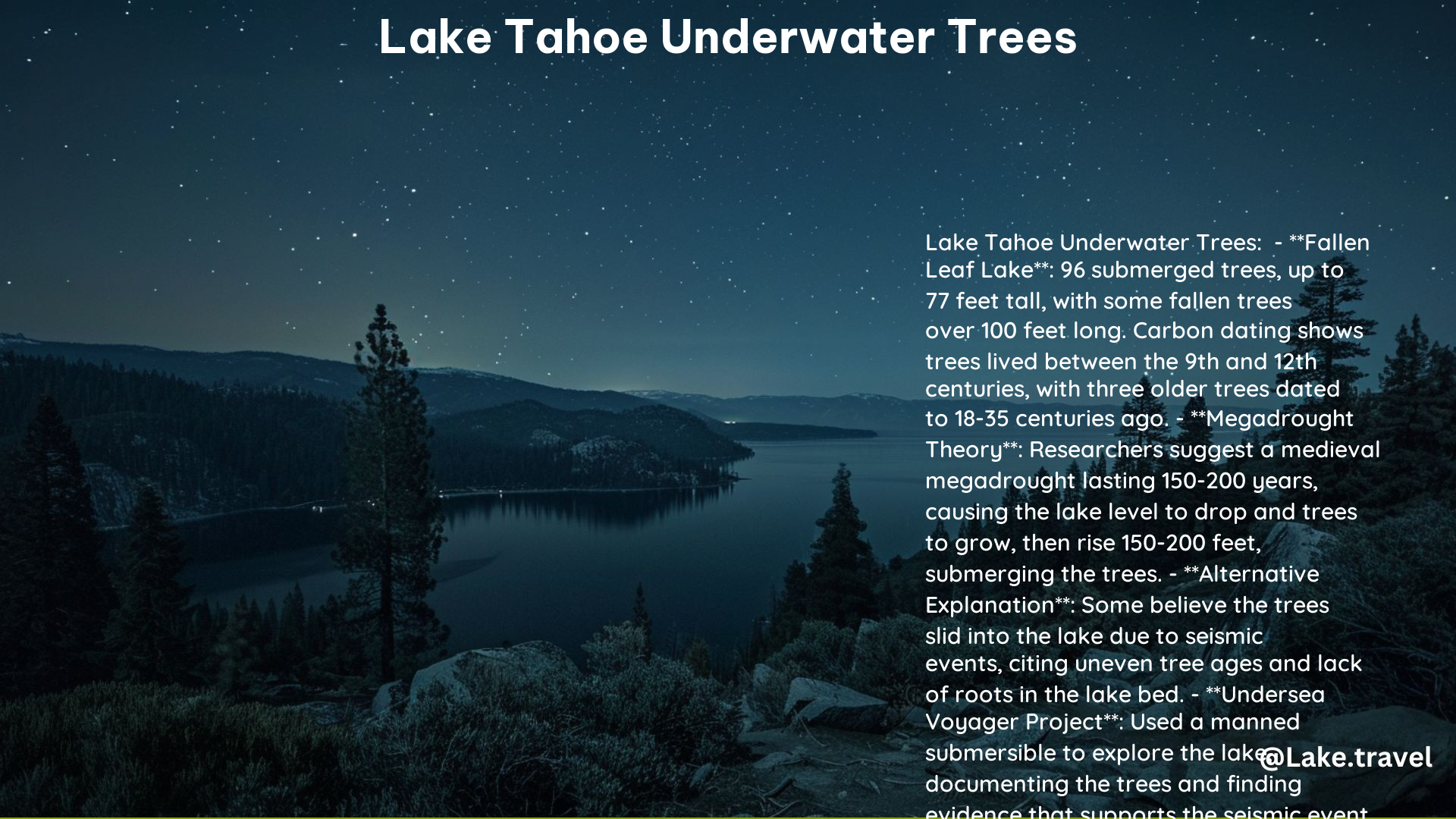Lake Tahoe, a renowned alpine gem in California, harbors a captivating natural wonder – the underwater trees of Fallen Leaf Lake. These ancient conifers, some dating back over 2,000 years, lie submerged in the depths of this smaller lake, just a mile south of the iconic Lake Tahoe. The discovery of these trees has sparked intense scientific interest, as researchers strive to unravel the intriguing story behind their presence.
Theories Explaining the Underwater Trees
Two primary theories have emerged to explain the existence of these underwater trees:
-
Megadrought Theory: One theory suggests that the trees grew during a prolonged medieval megadrought that lasted for centuries. As the drought eventually ended, the lake level rose, submerging the trees and preserving them in the cold, oxygen-deprived waters. This theory is supported by radiocarbon analysis of the tree roots, which date back to around 1250 AD.
-
Landslide Theory: Another theory proposes that the trees were uprooted by massive landslides and subsequently slid into the lake. This theory is bolstered by the presence of intact tree rings and the lack of evidence of a catastrophic landslide that would have broken or washed away the tree rings.
Characteristics of Fallen Leaf Lake

Fallen Leaf Lake, a glacially carved mountain lake, boasts a maximum depth of 410 feet. The lake’s water quality is exceptionally high due to the absence of commercial development and the use of modern sediment retention techniques. The water is even potable, with many homes along the shoreline using it as a water source during the winter months.
Exploring the Underwater Trees
The Undersea Voyager Project, a nonprofit organization dedicated to oceanographic exploration and discovery, has played a pivotal role in studying the underwater trees. Using a manned submersible, the team has delved into the maximum depths of Fallen Leaf Lake, meticulously documenting the trees and other intriguing features, such as sunken boats and an underwater seismic fault.
Ecological Significance
The underwater trees are not the only unique aspect of Fallen Leaf Lake. The lake is also home to the Lahontan cutthroat trout, a native species that was reintroduced to the lake in 2006. Additionally, the lake’s ecosystem is influenced by the presence of non-native species, including lake trout and kokanee salmon.
Preserving the Natural Wonder
The underwater trees of Fallen Leaf Lake continue to captivate scientists and the public alike. While the exact cause of their presence remains a topic of debate, the research and exploration of these ancient conifers provide invaluable insights into the region’s ecological history and the importance of preserving our natural resources.
References
- Wikipedia. (n.d.). Fallen Leaf Lake. Retrieved from https://en.wikipedia.org/wiki/Fallen_Leaf_Lake
- MyNews4. (2022, July 20). Ask Joe Investigates: Underwater trees evidence of “mega drought”. Retrieved from https://mynews4.com/on-your-side/ask-joe/ask-joe-investigates-underwater-trees-evidence-of-mega-drought/
- California Diver. (2016, July 4). Explorers Study Ancient Underwater Forest at Fallen Leaf Lake, Tahoe. Retrieved from https://californiadiver.com/solving-a-mile-high-mystery-0703/
- OC Register. (2016, December 10). Lake Tahoe underwater explorers find old boats and ancient trees, but no mobster bodies. Retrieved from https://www.ocregister.com/2016/12/10/lake-tahoe-underwater-explorers-find-old-boats-and-ancient-trees-but-no-mobster-bodies/
- Lake Scientist. (2016, July 26). Fallen Leaf Lake Submerged Trees. Retrieved from https://www.lakescientist.com/fallen-leaf-lake-submerged-trees/.
